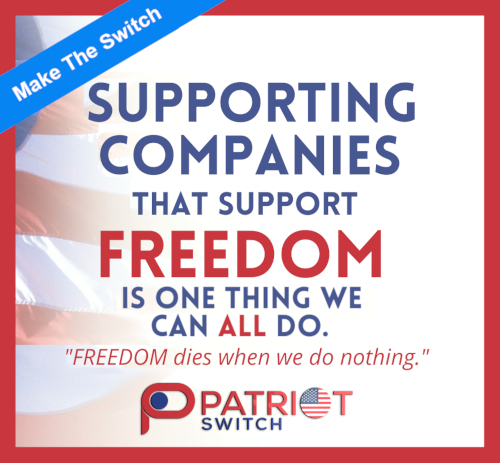On Wednesday, the U.S. Army turns 248 years old. It was born by congressional resolution even before America was a nation.
The words “This we will defend,” emblazoned on the Army flag, encapsulates the ideals of the Army. It reflects the requirement that the primary mission of the Army is to defend America and its interests.
Also on the flag are 190 battle streamers denoting the campaigns fought by the Army, ranging from the Battle of Lexington on April 19, 1775, to the most recent streamer for Operation Inherent Resolve in Iraq.
The streamers—long, colored ribbons—are physical testament to the sacrifices made by the Army in defense of the nation.
Those battles and campaigns are the core of why America has an Army, but they do not represent the sole contribution.
Indeed, the history of the Army is, in no small part, the history of the country. The Army has trained and prepared leaders for further service to America. You need look no further than George Washington, Dwight Eisenhower, George Marshall, and Colin Powell, leaders who started in the Army, but who went on to hold high office in American government.
Apart from the impact of individuals, the Army has been a part of making big things happen for the nation. There are many examples of that, including the construction of the Panama Canal, the related achievement of finding a cure for yellow fever, and the integration of the armed forces in 1948, and its resulting impact on American society.
But two examples provide perhaps the clearest cases of how the Army has worked with American scientists to get big things done: the development of the atomic bomb and three vaccines for COVID-19. Both are examples of an enormously productive partnership between gifted scientists and decisive Army leaders.
The movie “Oppenheimer,” due to be released on July 21 tells the story of J. Robert Oppenheimer and the development of the atomic bomb. It features Cillian Murphy as Oppenheimer. The overall program to develop the bomb was referred to as the “Manhattan Project,” ran from 1941 to 1945, employed more than 120,000 Americans, and cost more than $2 billion (in 1945 dollars).
It’s not clear, however, how Oppenheimer’s military counterpart and boss, U.S. Army Gen. Leslie Groves, will fare in the movie. Judging from the trailer, Groves (played by Matt Damon) gets only a few moments, and in those, he appears rather churlish.
For a fuller understanding, the book “The General and the Genius,” published in 2015, does a great job of describing the partnership between Oppenheimer and Groves. You learn that Groves solely provided the organization, planning, and drive for the Manhattan Project, while Oppenheimer was responsible for the science and scientists.
The takeaway is that, without Groves and Oppenheimer working closely together—each contributing their strengths while covering for each other’s weaknesses—there wouldn’t have been an atomic bomb to end the war with Japan.
Groves was all business and pushed relentlessly toward completion.
Whenever someone wants to suggest that America needs a national effort toward solving a big, important problem, they often say, “We need a Manhattan Project to accomplish X.” It’s a great example of the Army partnering with the nation to get a big thing done.
For a more recent example, we should look to Operation Warp Speed, the effort to field a COVID-19 vaccine in record time. Operation Warp Speed was the largest of global efforts to develop COVID-19 vaccines, investing more than $18 billion in late-stage clinical development and vaccine manufacturing.
The program was first announced on May 15, 2020, and lasted until February 2021. Nothing of this scale had ever been attempted before: The announced goal in May 2020 was to “produce and deliver 300 million doses of safe and effective vaccines by January 2021.”
Just like the Manhattan Project, Operation Warp Speed was a partnership between the U.S. scientific community and the Department of Defense. Moncef Slaoui, a retired pharmaceutical executive, was named Operation Warp Speed’s chief adviser and Army Gen. Gustave Perna was made chief operating officer.
Along with Perna were 60 military officials including four general officers who filled critical positions on the team, such as director of supply and production, and deputy director.
Perna brought to the table immense experience in logistics and organizational skills, while Slaoui brought extraordinary vaccine expertise. Together they led Operation Warp Speed to the development of three safe, lifesaving vaccines at record speed. The National Institutes of Health estimated that it prevented up to 140,000 deaths due to COVID-19.
Just like the Manhattan Project, Operation Warp Speed’s success was likely delivered by the close partnership between the Army and American scientists and industry. When the country needs big things done quickly, turning to the Army has been a proven strategy.
Through its 248 years of proud history, the Army has supported the nation, by fighting its wars and by supporting society with leadership and dedication.
Happy 248th, Army!
Have an opinion about this article? To sound off, please email letters@DailySignal.com and we’ll consider publishing your edited remarks in our regular “We Hear You” feature. Remember to include the url or headline of the article plus your name and town and/or state.
The post US Army and America: Together Accomplishing Big Things appeared first on The Daily Signal.
- The Sneaky Way Deep-State Bureaucrats Advocated Censorship of Americans in 2020 - November 13, 2023
- There Is No ‘Second America’ if This One Fails - November 13, 2023
- ‘Zero Appetite’ in Israel for Cease-Fire With Hamas, Embassy Official Says - November 13, 2023
JOIN US @NewRightNetwork on our Telegram, Twitter, Facebook Page and Groups, and other social media for instant news updates!
New Right Network depends on your support as a patriot-ran American news network. Donate now


